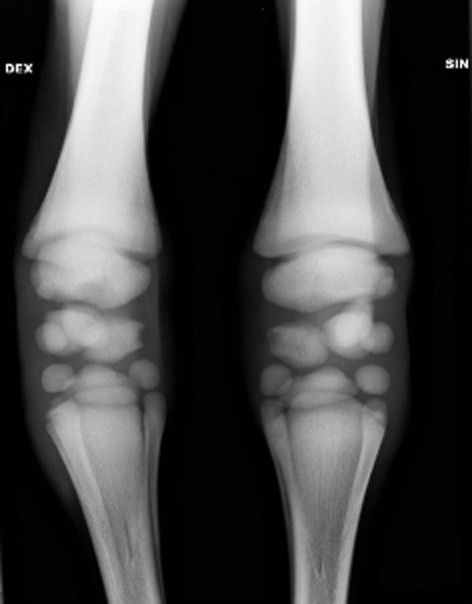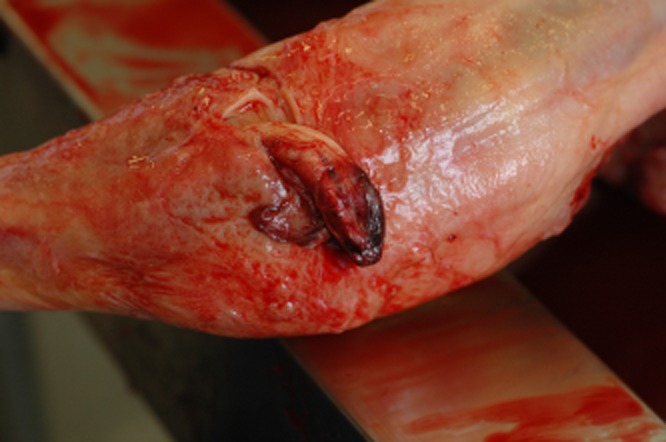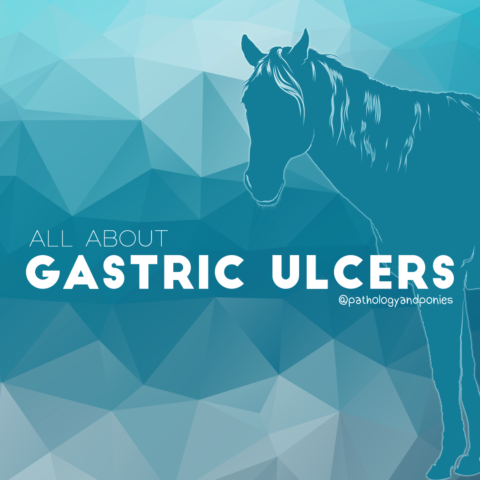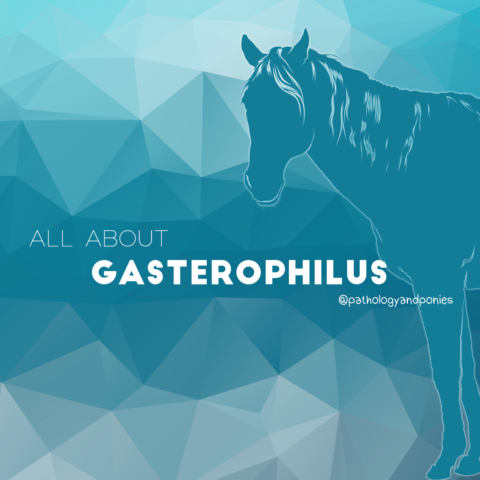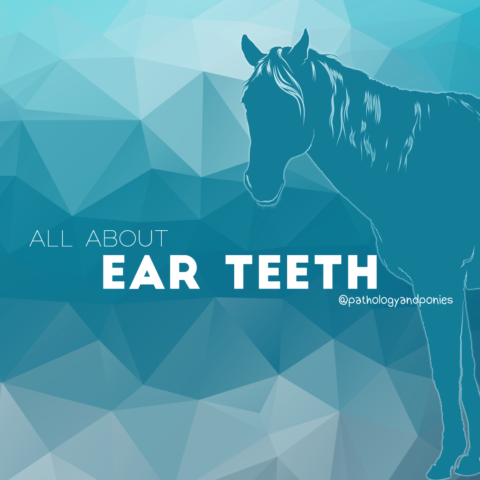Today’s path rounds are on 𝐜𝐨𝐧𝐠𝐞𝐧𝐢𝐭𝐚𝐥 𝐡𝐲𝐩𝐨𝐭𝐡𝐲𝐫𝐨𝐢𝐝𝐢𝐬𝐦 𝐚𝐧𝐝 𝐝𝐲𝐬𝐦𝐚𝐭𝐮𝐫𝐢𝐭𝐲 𝐬𝐲𝐧𝐝𝐫𝐨𝐦𝐞 (CHD)! This was a request ![]()
𝐖𝐡𝐚𝐭 𝐢𝐬 𝐢𝐭?
CHD is a syndrome of foals primarily characterized by enlarged thyroid glands and deformities of the limbs. This syndrome was first described in Western Canada by one of my current professors. Small world!
𝐖𝐡𝐨 𝐠𝐞𝐭𝐬 𝐢𝐭?
Foals get this condition!
𝐖𝐡𝐚𝐭 𝐜𝐚𝐮𝐬𝐞𝐬 𝐢𝐭?
The exact cause is still unknown, however there have been many proposed causes. The cause that has the most support currently is low dietary 𝐢𝐨𝐝𝐢𝐧𝐞 in the mother’s diet, which leads to inadequate iodine for the growing foal.
𝐖𝐡𝐲 𝐢𝐬 𝐭𝐡𝐢𝐬 𝐚 𝐩𝐫𝐨𝐛𝐥𝐞𝐦?
Inadequate iodine is one of the major causes of 𝐠𝐨𝐢𝐭𝐫𝐞 (thyroid gland enlargement) in any species, and that is one of the main findings in these foals. Other common findings associated with CHD are 𝐟𝐥𝐞𝐱𝐮𝐫𝐚𝐥 𝐥𝐢𝐦𝐛 𝐝𝐞𝐟𝐨𝐫𝐦𝐢𝐭𝐢𝐞𝐬 (limbs that are permanently flexed), 𝐢𝐧𝐜𝐨𝐦𝐩𝐥𝐞𝐭𝐞 𝐣𝐨𝐢𝐧𝐭 𝐨𝐬𝐬𝐢𝐟𝐢𝐜𝐚𝐭𝐢𝐨𝐧 (soft bones in the joints) and 𝐦𝐚𝐧𝐝𝐢𝐛𝐮𝐥𝐚𝐫 𝐩𝐫𝐨𝐠𝐧𝐚𝐭𝐡𝐢𝐬𝐦 (severe underbite). These foals also often have signs of 𝐝𝐲𝐬𝐦𝐚𝐭𝐮𝐫𝐢𝐭𝐲 (excessively long gestation preventing proper growth) such as a silky hair coat and floppy ears.
Because of the skeletal changes in these foals, they often are not able to stand up, and if they can, their underbite prevents them from suckling normally.
𝐇𝐨𝐰 𝐢𝐬 𝐢𝐭 𝐝𝐢𝐚𝐠𝐧𝐨𝐬𝐞𝐝?
The veterinarian can make the diagnosis by assessing the foal for the skeletal changes listed, and the presence of signs of dysmaturity and an enlarged thyroid gland.
𝐇𝐨𝐰 𝐢𝐬 𝐢𝐭 𝐭𝐫𝐞𝐚𝐭𝐞𝐝?
Unfortunately there is no treatment for these foals. Due to their soft joint bones, they have an extremely poor prognosis because if they do stand, their body weight will collapse the soft joint bones and prevent them from ever growing properly. For this reason, these foals are often euthanized.
𝐏𝐡𝐨𝐭𝐨𝐬
1) A foal with flexural abnormalities. In these cases, the foal is completely unable to straighten its legs.
2) An X-ray showing incomplete ossification of the bones of the knee joint. Normally each of those bones should have a square, angular appearance, and a strongly white periphery.
3) Enlargement of the thyroid gland at necropsy.
4) Another consequence of flexural abnormalities is 𝐫𝐮𝐩𝐭𝐮𝐫𝐞 𝐨𝐟 𝐭𝐡𝐞 𝐭𝐞𝐧𝐝𝐨𝐧𝐬. In this poor foal, their 𝐝𝐢𝐠𝐢𝐭𝐚𝐥 𝐞𝐱𝐭𝐞𝐧𝐬𝐨𝐫 𝐭𝐞𝐧𝐝𝐨𝐧 (extends the leg joints) ruptured because of the severity of their leg flexion.
5) An example of mandibular prognathism in a CHD foal.
𝐒𝐨𝐮𝐫𝐜𝐞𝐬
Koikkalainen K, Knuuttla A, Karikoski N, Syrjä P, Hewetson M. Congenital hypothyroidism and dysmaturity syndrome in foals: first cases reported in Europe. Equine Veterinary Education 2014;26(4):181-189.
Photos 1-5 © Koikkalainen et al.


